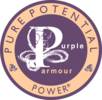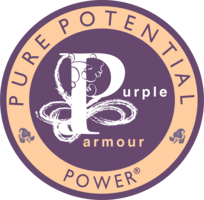As seen on www.earthdoctor.com
If you keep up with current events occurring in the health field today you may have come across purple corn and wondered what it was and how it benefits us. Well, purple corn, also known as blue corn, is known to be a powerful antioxidant, a cancer preventer and an anti-inflammatory, if that doesn’t get you to start eating it, I don’t know what will! Scientists are discovering amazing health benefits and healing potentials of this unique crop. Purple corn is fast approaching classification as a functional food, which is an important part of our diet that provides energy and essential nutrients. Purple corn is the same species as regular corn. But, this corn produces kernels with one of the deepest shades of purples found anywhere in the plant kingdom.
This type of corn grows only in Peru. Some scientists say the harsh environment of the Peruvian Andes which rises 10,000 to 15,000 above sea level, forced this corn to fight for survival and increase its immunity capacity through evolution. No one knows why it turned up in Peru. Purple corn contains a wide variety of phytonutrients including massive amounts of anthocyanins, which are a type of flavonoid that produces blue, purple or red colors. Anthocyanins are anti-inflammatory and they are powerful antioxidants that keep us looking young and protect from disease. They have also been shown to promote collagen formation which is great for our skin and also improves circulation.
Purple corn has nearly 5 times more anthocyanin than blueberries and can be found most frequently as corn kernels but you can also find it in liquid form used for nutritional supplementation. You have also likely seen blue corn tortilla chips in your local supermarket. The people of Peru make a fermented drink called chicha morada out of the corn. They also use it to color foods and beverages, which is a practice that is becoming popularized in other parts of the world.
There have been numerous studies done that prove just how powerful this crop is. One study was done by a professor an Ohio state university who led a team studying anthocyanin’s cancer fighting potential. During the study, the team took anthocyanins from different plant sources including purple corn, grapes, purple carrots, radishes, and elderberries and compared the amount of each different type of anthocyanin it took to reduce in vitro cancer growth by 50%. The amount from purple corn was the winner, it took less anthocyanin from the corn to reduce cancer growth by half than it did any other plant source.
Another study was done in 2002 and was published in the “Journal of Nutritional Science and Vitaminology” that looked at the potential health benefits of anthocyanin and how it related to inflammation. The study revealed that it reduced the inflammatory responses in mice suffering acute chemically induced inflammation. The researchers concluded that the anthocyanins may have potential treatment benefits for inflammatory diseases. A study done by Tsuda et al in 2003 revealed the effects of purple corn on obesity and diabetes. Two groups consumes a diet rich in fats for 12 weeks but one of the groups also received purple corn pigments. The group consuming the corn didn’t gain weight and didn’t show hyperglycemia (high blood sugar). In comparison, the group that didn’t receive the extract showed an increase in both.
I’m sure in the future you will be seeing more purple corn products in your grocery store as the amount of health benefits uncovered continues to grow. It is definitely something that should be added to your diet whether it’s in natural form, as a liquid extract or in baked goods. This is going to be a superfood for many years to come.

